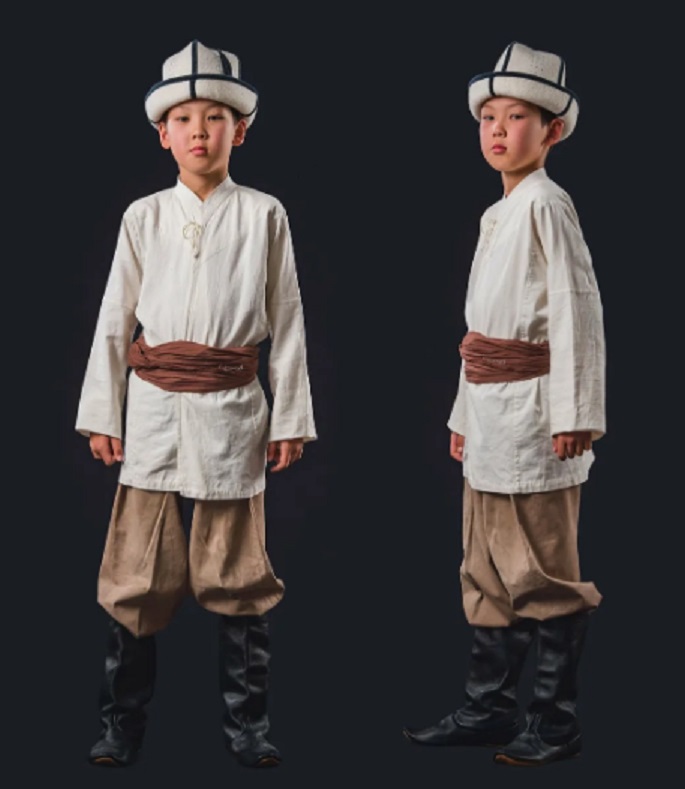
The clothing of the southern Kyrgyz has not received special attention in literature. There are only fragmentary pieces of information, but they are characterized by an emphasis on national features and the uniqueness of Kyrgyz clothing. More detailed information can be found in the aforementioned works of V. I. Kushelevsky and N. S. Lykoshin.
Valuable sources for studying the clothing of southern Kyrgyz people include ethnographic collections stored in the State Museum of Ethnography, the Museum of History of the Uzbek SSR, and the Historical Museum of the Academy of Sciences of the Kyrgyz SSR. Additionally, photographs and reports by S. M. Dudina on his trip to Central Asia reflect the clothing of southern Kyrgyz people (mainly from the Alaï region) that was prevalent at the very beginning of our century.
The clothing of southern Kyrgyz people in the 19th century was influenced by the semi-natural character of their economy. A significant part of the clothing was made from materials produced at home. Sheepskin, leather from wild and domestic animals, and woolen fabrics ("taar," "basma taar," "piyaz taar") were widely used. Alongside this, for sewing clothes, they purchased paper, silk, and artisanal fabrics from Uzbek, Kashgar, and Russian factories in the market: plain white and printed calico, (ak surp), striped fabric (alyak, alacha), chintz ("chit"), brocade (kymkap, zarbarak), silk (shayı, pashayı), semi-silk fabrics (adres, bekasap, ak arka), velvet (barkut, bakhmal), cloth (nootu), thin white material (ıstambul), muslin with a border (daka), and dense cotton fabrics (ilyas, trinke, napty, lyastik).
Before the advent of the sewing machine, which began to spread at the beginning of our century, Kyrgyz women sewed clothing by hand. They usually stitched the edges of the fabric using the "forward needle," "behind the needle," or "over the edge" seams.
In addition to fabrics, Kyrgyz people were always eager to buy ready-made clothing. Among the most frequently purchased items were various types of robes. They were not comfortable clothing. L. F. Kostenko writes about this: "The cut of the robe is extremely clumsy: they are made extraordinarily wide, with the longest sleeves (twice the length of the arms), sitting with huge folds on the arm when one needs to work, and falling off the arms when the subject goes visiting."
For southern Kyrgyz people, as well as northern ones, robes have an ancient and widely used name in Central and Central Asia, "ton," the origin of which is evidently connected with fur coats. In the south, this concept includes all types of robes. Depending on the fabric from which they are sewn, they are referred to as: pashayı ton, kymkap ton, zarbarak ton, etc. Often the word "ton" is omitted, and in such cases, they are simply called "kymkap," "zarbarak," etc., implying a robe made from the named fabric. The most expensive robes were made of brocade. Significant funds were required to purchase them. For example, the cost of a brocade robe was equivalent to the cost of a camel, while a semi-silk one cost two sheep.
Conclusions on the Study of the Settled Housing of Southern Kyrgyz People














































